The Gift of South Dakota
Subscriptions to South Dakota Magazine make great gifts!
Subscribe today — 1 year (6 issues) is just $29!
All Roads Lead to Wall Drug
Aug 3, 2016
Where the heck is Wall Drug? It’s a question that lurks, like heat squiggles over the asphalt, on the margins of South Dakota highway horizons — always somewhere up ahead, until it isn’t.
As Interstate 90 unfurls into the Badlands from either, greener direction, the Wall Drug experience has established its imminence through incremental creep. The signposts form an outline. As you catch up with the miles ahead, imagination fills in the increasingly arid open spaces.
As the wheels turn, jagged layer cakes of geologic epoch expose themselves in rainbow bands, like color-coded race tracks for tiny ancestral horses. Somewhere out there Eohippus tries to close the gap on Mesohippus in the final lap. As I-90 rolls you back into a distant past, you find yourself in a prehistoric diorama with strange roadside attractions where ice water accumulates the exotic cachet of a saffron stigma.
It all started with ice water. Before the signs stretched to Wyoming and Minnesota like squares in a graphic novel told across untold acres, it started with ice water.
“The Wall Drug sign program started in 1936 when my grandmother, Dorothy Hustead, had an idea to let people know we were here, and they had no business,” says third generation Wall Drug owner Rick Hustead. “She went to the drug store to talk to [her husband] Ted and said, ‘Ted we should let people know we’re here. We should put up a sign: Get a soda. Get a beer. Turn next corner, just as near to Highway 16 & 14. Free ice water. Wall Drug Store.’ That was the first series of signs.”
The early signs were text only. Free ice water was a big enough draw. They worked almost instantly, saving a struggling business in the midst of the Depression.
Over the decades, the signs and the store grew together, expanded, became more elaborate. Ted and Dorothy’s son Bill was the visionary. He transformed the store into a Badlands oasis teeming with folklore as magical and organic as a jackalope pack hopping across a craggy ravine. Sign artists Dobby Hansen of Philip and Mike Kurtz of Rapid City, and others, built on the original idea and created what became an instantly recognizable aesthetic, populated with occasional, colorful frontier characters, as at home in the Badlands as a prickly pear or porcupine.
In 1991, Barry Knutson of Philip (originally from rural Haakon County, near Grindstone) — a carpenter/newspaper editor/National Guardsman — who had taken some art classes at SDSU began his own sign startup and, before he really even knew what he was doing, went right for the Big One next door.
“I got some encouragement from people in Philip and they said you should do some signs. Because Dobby Hanson was really good at what he did, but he had passed away. And so they were like, you know what, you should go check and see if they have any openings. I ran into Teddy Hustead, didn’t know who he was at the time, and so I said, ‘I do carpentry. I’d like to do some of your signs. I think I’d be good at it.’ He said, ‘Right now we have three of the best sign painters in South Dakota, we’re good.’”
“We talked a little bit longer and he said you know what, you got a tape measure. Let’s go measure for this one thing. We’re going to put in a kind of animal backyard thing. Why don’t you go and make me a three little pigs sign. I said how big? He said, ‘About this big.’ Just made hand movements. So I came up with the sign. Went home, got a piece of plywood. Painted the sign. I didn’t really know what I was doing at all. We used the wrong paints. We didn’t have the right brushes. Didn’t have the right boards. Took it back to him. It was a cute three little pigs sign. And it was up for a while. Then when that happened he said, ‘You know what, why don’t you give him some more sign board and tell him what to do and we’ll give him another sign.’ And that led to another sign. And now here we are 25 years later and we are doing all of their signs now.”
In the early years, Knutson the artist had to hold back a little to stay within the Wall Drug tradition of text-heavy, for road read-ability, signs. As he became a better sign painter, he gradually sold the Husteads on more figurative artwork, starting with imagery from classic Wall Drug post cards and updates on the occasional classic sign that did include imagery.
“They wanted bold, brief messages. And then we would kind of throw artwork in as we could, started incorporating the two together. We saw the value of little art pieces and other sign painters did too. It wasn’t like we were geniuses.”
Knutson is obsessive about finding the right balance, and sweats every detail.
He sands his signs before painting them — after they're primed and taped — to create sharper lines. He’s become a master of spectral fades. The signposts and the backs of every sign are painted Wall Drug’s signature green. Every bolt is aligned, in its right place. (Barr’s Sign Studio sees every sign through from design to installation.)
He learned everything he knows about signs from on-the-job experience, developing a meticulous set of SOP’s some sign painters might consider wasted time. He always paints them on a flat surface, not standing up against a wall. “We’ve tried both. We can put a thick layer of paint on them [when they're laying flat] so they have a glossy finish when we’re done. And they hold up so much longer.” Longevity is a big part of the equation. Wall Drug is not a faddy brand. Designs can last decades. Signs do too.
In a quarter decade of painting Wall Drug signs (as well as signs for Al’s Oasis, the Ranch Store and other assorted attractions), and (currently) as the sole visual ambassador from Wall Drug to the highways of the upper Midwest, Knutson and family — Edna Knutson (a First Lieutenant in the South Dakota Army National Guard’s Medical Command), and daughters Kianna and Katlin — have made an unmistakable imprint on an iconic brand.
They’ve changed it. They’ve kept it the same.
“With Wall Drug, you want to keep up with the new trends, but you’re almost not allowed to without losing who you are,” Knutson says. “So that’s always been a challenge. How much can we do? How far can you go without changing who you are and what people expect you to be? I think right at first when I started doing signs, I was like, I’m going to change Wall Drug a little bit. And once I started doing that I really realized what Wall Drug is. It’s the tradition.
“We don’t always throw in the yellow and the green, but when you ask people, they just traveled across the state and there’s 200 signs and maybe 150 of them have yellow and green. In their mind, that’s all we use. In everything, we’re trying to make the signs so that before you come up on them you say, ‘That’s a Wall Drug sign.’ We do try to work in new designs. But that’s a problem. How can they have their grandparents saying, ‘This is Wall Drug,’ and their grandkids knowing and connecting with their grandparents in that same feeling of nostalgia that kids don’t even know exists?”
That’s the existential Wall Drug sign question: how to honor the tradition while keeping it a living tradition? Knutson talks about that problem like a man who thinks about it, all the time. And it shows. The Knutson family has walked the line.
Do they realize that their collective vision has become an intrinsic feature of the South Dakota travel experience, as indispensable as antelope herds or a giant concrete prairie dog? Maybe sometimes. Occasionally tourists, mostly European, walk in to the sign shop.
“It’s really neat when you go to a restaurant, and you go back to the restroom and in one of the hallways they have a picture of a Wall Drug sign,” Knutson says. “You never realize it sometimes, because it’s just a job some days. And you never feel like you quite give enough. That’s my deal, I always feel like I have to give a little bit more. I want to improve. It’s never quite enough.”
Barry Knutson, the meticulous man from Grindstone, who never cuts a corner to save time or effort on a sign, has created a roadside story that infuses the road ahead with wonder, sometimes with a question — like the groovily lettered “Have You Dug Wall Drug?” Or with happy-at-home gumbo country friends — like the potbellied cowboy bathing in his happy horse’s watering trough. His South Dakota story offers a link to an imaginary past — the only kind of past that’s happy. In letters and characters, his Wall Drug signs build up over the miles into an episodic tableau — a story of South Dakota the traveler co-authors along the way.
Michael Zimny is the social media engagement specialist for South Dakota Public Broadcasting in Vermillion. He blogs for SDPB and contributes arts columns to the South Dakota Magazine website.

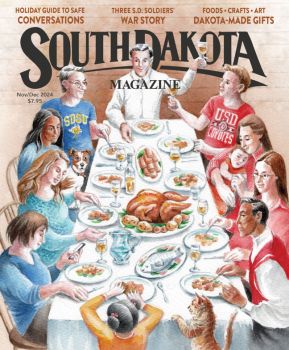
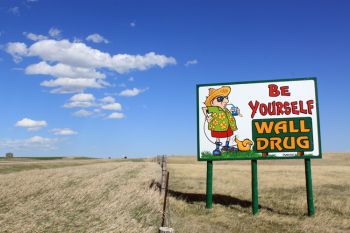
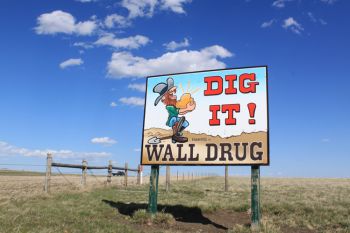
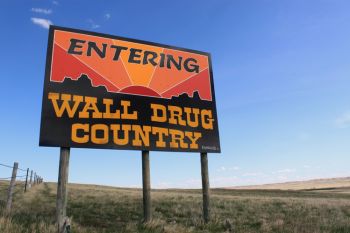
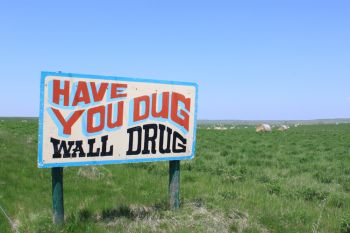
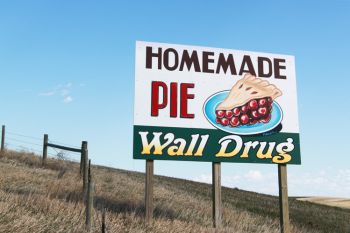
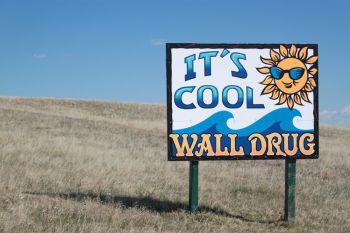
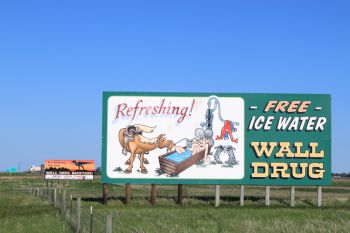

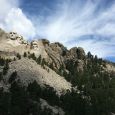
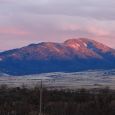
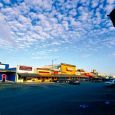
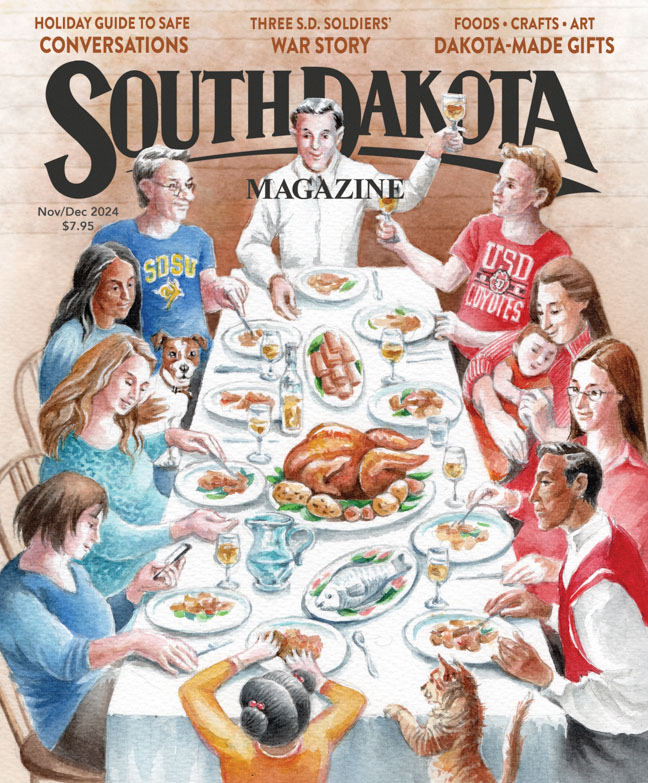

Comments